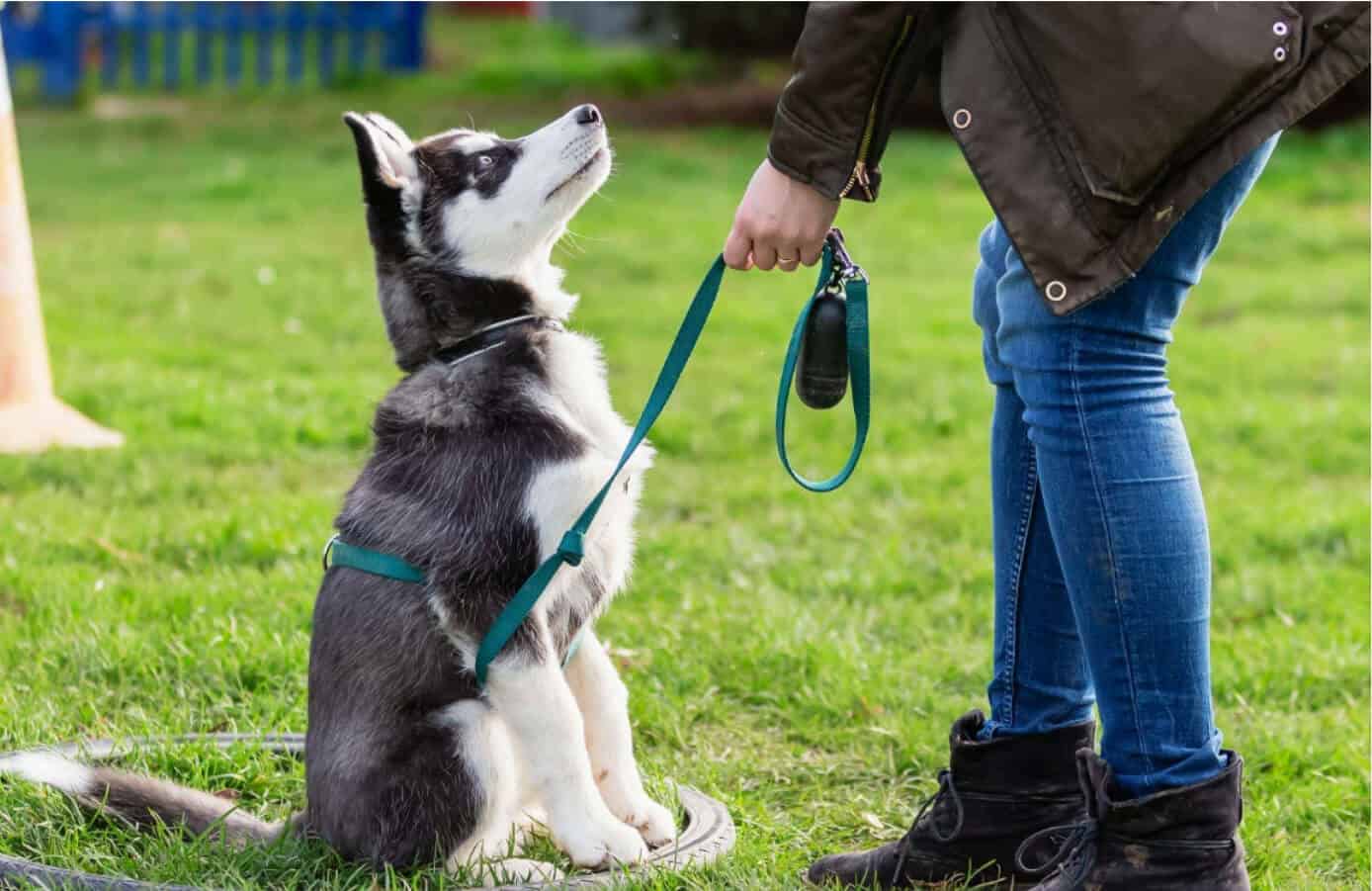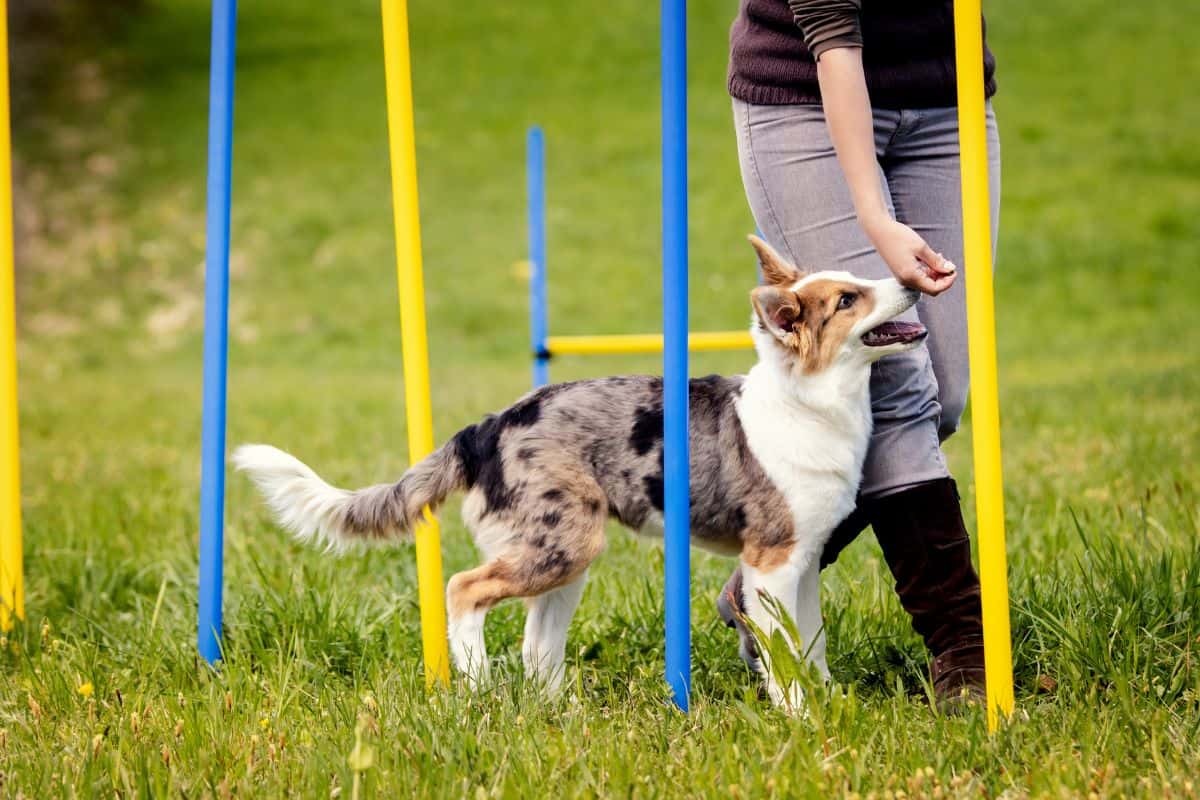Why Consistency is Key in Dog Training for Long-Term Success
Why Consistency is Key in Dog Training for Long-Term Success
Blog Article
Newbie's Guide to Successful Canine Training in the house
Effectively educating a canine at home needs a nuanced understanding of canine actions and effective interaction strategies. Establishing clear training objectives, using premium rewards, and maintaining consistency throughout member of the family are important elements. Integrating training right into day-to-day routines can improve both involvement and retention. Nevertheless, several novice fitness instructors encounter obstacles that might prevent progress. To navigate these complexities properly, it's vital to check out several vital aspects that can transform your strategy and result in an unified relationship with your pet dog. What fundamental principles should every novice grasp to make certain success?
Understanding Dog Behavior
Recognizing pet dog habits is essential for effective training and cultivating a harmonious relationship between human beings and their canine friends. Dogs communicate primarily with body movement, vocalizations, and faces, making it essential for owners to analyze these signals precisely. Acknowledging behaviors such as tail wagging, roaring, or cring can supply insights right into a pet's mood and intentions.

Usual behavior problems, such as aggression, anxiety, or excessive barking, typically originate from misunderstandings or unmet needs. Observing and attending to these concerns promptly can prevent rise and ensure a favorable training experience. By cultivating a deep understanding of canine habits, owners can customize their training techniques to fit their canine companions, inevitably resulting in a contented and well-behaved pet.
Important Educating Tools
A well-equipped training room can substantially boost the performance of canine training in the house. Vital training tools make sure that both the dog and the trainer can involve in effective sessions that cultivate understanding and bonding.

Spending in a strong chain and a comfy, well-fitting collar or harness is crucial for security and control. These devices aid establish borders and ensure the pet stays safe and secure during training. Furthermore, a marked training area, complimentary from distractions, help focus for both the pet and the instructor.
Educating help such as training pads, cones, or agility devices can also improve the experience by presenting variety and obstacles. Having a notebook or electronic application for tracking progress can be important, allowing you to note successes and areas for renovation. Utilizing these necessary tools will produce a favorable training setting and lay the foundation for effective discovering.
Developing a Training Regimen
Developing a regular training routine is crucial for efficient pet training at home. A well-structured routine not just assists in strengthening preferred habits yet also offers your canine with a feeling of security and predictability. To produce an effective training routine, begin by determining certain training objectives, such as standard commands, chain strolling, or house-training.
Choose a designated time each day for training sessions, preferably when your pet dog is receptive and alert. Procedure needs to be short, around 5 to 15 minutes, to preserve emphasis and avoid tiredness. Uniformity in timing and environment will certainly boost your dog's understanding experience.
Integrate training right into daily activities to strengthen skills. Method commands during strolls or mealtime, which incorporates finding out into natural routines. In addition, continue to be adaptable and change the regular as needed, fitting your dog's power degrees and state of mind.
Positive Support Techniques
Positive reinforcement techniques are basic to reliable dog training, advertising wanted actions via rewards instead of punishment. This method makes use of positive stimulations, such as treats, appreciation, or playtime, to motivate pet dogs to repeat particular activities. The foundation of this technique is timing; incentives need to be given right away following the desired actions to produce a clear organization.
When carrying out positive reinforcement, it is crucial to select incentives that are motivating for your pet dog. High-value treats, such as little items of hen or cheese, can be particularly reliable during training sessions. In addition, differing the rewards can maintain your pet's rate of interest and enthusiasm.
Start with simple commands, like "rest" or "remain," and check gradually progression to a lot more intricate jobs. Consistency is crucial; guarantee that all member of the family make use of the very same commands and reward systems to prevent complication.
Additionally, it is crucial to remain patient and prevent frustration. Pet dogs, like human beings, learn at their own rate. By fostering a supportive training environment through positive support, you can Find Out More enhance your pet dog's understanding experience while reinforcing the bond between you and your hairy companion, laying the groundwork for successful training end results.
Common Training Challenges
While training a pet dog in the house can be a satisfying experience, it typically includes a collection of usual challenges that can evaluate both persistence and uniformity. One prevalent problem is distraction. Pet dogs might come to be conveniently sidetracked by sounds, movements, and even scents in their setting, making it difficult to maintain their emphasis throughout training sessions.
Another obstacle is incongruity in commands and support. It can prevent and perplex the pet dog development if family participants make use of various hints or incentives. Developing a unified strategy is essential for efficient communication.
Additionally, dogs can experience aggravation or anxiety, particularly if they do not recognize what is anticipated of them. This can result in unfavorable behaviors, such as barking or chewing.
Finally, the timing of reinforcement is critical (Dog training). Delayed rewards can lessen the performance of positive reinforcement, as canines might fail to link the habits with the reward
Conquering these obstacles needs dedication, clear communication, and a structured training plan. Acknowledging and addressing these usual barriers will pave the way for a much more effective and satisfying training experience in your home.
Verdict
In verdict, successful pet training at home demands a detailed understanding of canine behavior and efficient communication approaches. By websites developing clear training goals and using high-grade deals with together with positive reinforcement, the training process becomes much more gratifying for both the dog and the fitness instructor. Uniformity, persistence, and flexibility are necessary parts that assist in understanding. Ultimately, integrating training into day-to-day regimens boosts the bond between canine and owner, making the experience both delightful and productive.
Developing a regular training regimen is necessary for efficient pet dog training at home.Positive reinforcement strategies are essential to efficient canine training, promoting wanted actions with benefits rather than punishment (Dog training). By promoting a supportive training atmosphere through favorable support, you can improve your dog's understanding experience while reinforcing the bond between you and your furry companion, laying the foundation for effective training results
In conclusion, effective canine training at home demands a thorough understanding of canine behavior and efficient communication strategies. By developing clear training goals and utilizing high-quality deals with together with positive support, the training process comes to be a lot more fulfilling for both the fitness instructor and the dog.
Report this page